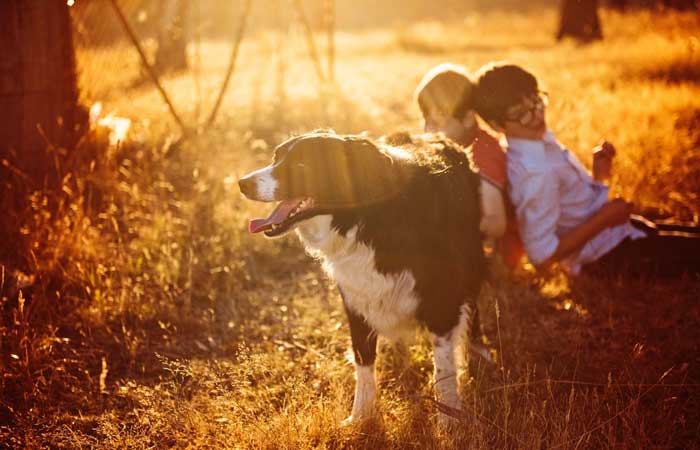Adopting a pet, when done at the right time, can teach kids many life lessons and skills that they will need to practice as adults. They will learn the importance of taking care of another living being, as well as compassion, patience, and even respect.
Christmas and birthdays are a few occasions when it is common for parents to give their kids a pet. But keep in mind that adopting a pet is like adding another member to the family. It is a choice that has a permanent impact and requires a lifetime commitment.
Teach Your Kids About Responsibility Through Pet Ownership

As an adult, expect to do much of the work, especially in the beginning or with younger kids. Kids often require a lot of guidance, reminders, and also prodding. But the work you put in with your kids can be advantageous in the long run.
Gauge their interest
Determine the reason why your family wants a pet before heading off to the shelter. Are you getting a dog, cat, rabbit, or hamster? Is it because your kids want one, or is it because you want to teach them to be responsible?
Your answer to this question can give you insight into the success rate of caring for an animal.
Adopt a pet because you want its company, and your family is ready to care for it. Developing a sense of responsibility takes time and a lot of effort. Becoming more responsible should be a bonus, not the goal.
There are many ways to assess whether your child is ready for a pet. When it comes to older kids or teens, you can look for classes in your local community, volunteering opportunities, or groups that allow you to foster an animal temporarily. Such options can give you and your kids a taste of what is expected without the long-term commitment.
If you already have a pet, your child may already be familiar with the tasks involved in taking care of one. Emphasize, however, that if your kid wants one, that it will be his responsibility. You can teach him what needs to be done, but your child should expect to handle more chores in the process, even when it’s uncomfortable or inconvenient.
Set expectations
Volunteering at a shelter is a great way to learn about caring for animals, but it won’t give your child an understanding of what it takes to care for animals 24/7. Perhaps your kid has expressed several times his interest in getting a pet of his own. Before you do, have a sit-down chat with your child.
Discuss what chores will be expected from your child and that there has to be a routine to follow. It is also worth talking about what happens if your child neglects his responsibilities. By having this talk earlier on, your offspring can think about the request and won’t feel overwhelmed by the chores it entails.
It is important to note that the responsibilities can also vary depending on the animal’s type, age, and temperament. For instance, brushing, grooming and even taking a dog out for a walk should only be done for small, trained dogs or when under adult supervision. The care of large or unruly animals should be left to adults.
Choose a suitable pet
Talking to your kid should enable you to discuss what types of pets you can adopt according to your child’s age, size, and personality. For instance, your seven-year-old may ask for a St. Bernard after watching movies such as “Beethoven.” It may be cute as a puppy, but it can weigh up to 75 kgs by its second birthday.
Your child may not be too open to a compromise, and this is a normal reaction. But keep in mind that, when it comes to kids, the pet is just as much your responsibility as it is for your child. Include the probability of doing more work yourself once you get a pet.
When adopting for the first time or if you have young kids, it may be worth trying out low-maintenance pets such as fishes, reptiles, small birds, insects, hamsters, and the like. Most dogs and cat breeds fall under medium-maintenance animals, which are better for older kids and teens.
Designate age-appropriate chores
Most people don’t like to do chores, and the same is true for kids. They may make excuses or find ways to avoid chores. The key is to assign tasks that are in line with their age so that they won’t feel overwhelmed.
For toddlers and younger kids, it could be as simple as checking the food bowl or spending a few minutes playing with the pet. Older kids until the age of 10 years can fill up the food bowl. Teens can help change the cat litter or take the dog out for a walk.
Involve your kids every step of the way, from learning about animals to doing daily chores. By doing so, they won’t feel left out or overburdened by the responsibility of caring for a pet. Instead of a task, they will treat it in the same way as they would taking care of a family member.
Recommended For You:
- 6 Places Your Kids Will Love On Fort Myers Beach
- Top Reasons Why You Should Travel To Iceland with Kids
- 7 Important Electrical Safety Tips to Protect Your Family
- How Modern Internet Services – Beneficial for Kids
AUTHOR BIO
Farah Al-Khojai is the Managing Partner of Pet’s Delight. A passionate entrepreneur, Farah holds a Bsc in Government from the London School of Economics. She is always on the lookout for new opportunities to develop and grow the pet and equestrian retail and wholesale market in the UAE and beyond, and is proud to be at the helm of the first and the largest pet care provider in the market representing world-class brands including Orijen, Applaws, Hunter, Savic, Flamingo, Ruffwear, and Rogz.